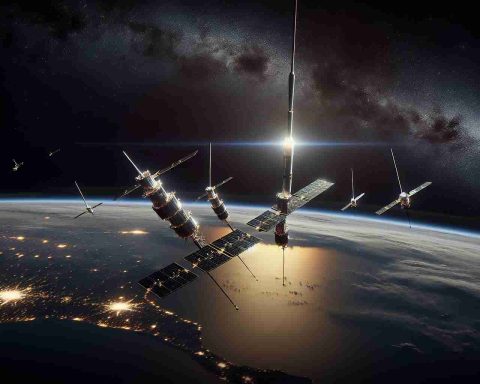- The maiden launch of the Spectrum rocket by Isar Aerospace signifies Europe’s first privately-financed attempt at space exploration.
- Despite the mission’s failure shortly after launch, the event represents Europe’s commitment to independent space ventures.
- The 28-meter Spectrum rocket, launched from Norway’s Andoya Spaceport, demonstrates Europe’s ambition to carve its path in the global space economy.
- Isar Aerospace’s experience illustrates how failures in rocket science yield critical data and lessons for future endeavors.
- The mission underscores the resilience and tenacity required in space exploration, highlighting Europe’s investment in its technological future.
- Each aerospace failure, including Spectrum’s, contributes to a broader narrative of innovation and persistence.
Under the vast Norwegian sky, a revolutionary moment for Europe ignited with the flash of a rocket’s flame. The Spectrum rocket, a bold new venture by the German startup Isar Aerospace, roared to life at the Andoya Spaceport, nestled within the Arctic’s stoic embrace. This launch marked not just a test of technology, but a testament to the burgeoning dreams of a continent eager to carve its own path in the cosmos.
Towering at 28 meters, this two-stage marvel was Europe’s first privately-financed attempt to reach the stars, outside the influence of traditional space powers. With no payload, Spectrum’s maiden voyage was a daring dance on the precipice of success and failure, a necessary stepping stone despite the high stakes. The global audience, eyes glued to live streams, witnessed as gusts of smoke billowed dramatically from the rocket’s sides mere moments after liftoff, signaling an unplanned return to Earth. In a heart-stopping explosion, this potent symbol of European ambition met an untimely demise.
Yet, for Isar Aerospace and its dedicated team, the journey does not end here. In the realm of rocket science, failure often becomes the groundwork for invention. Each mechanical groan and fiery flare provided invaluable data, crafting a detailed narrative of lessons learned. This spirit of resilience echoes throughout the aerospace industry, where every setback is but a pause before the next leap forward.
As Europe navigates its path within the space economy, such endeavors reflect a continent willing to invest in its future. Spectrum’s short-lived flight is not merely a tale of misfortune but a chronicle of human tenacity and the relentless push for knowledge in the uncharted realms above us.
Let us remember, from this brief blaze of ambition, the importance of persistence in the skies and beyond. In conquering the stars, even the localized failures write history—they teach, they inspire, and ultimately, they propel humanity forward.
The Spectacular Rise and Swift Fall of Europe’s Spectrum Rocket: Lessons and Future Prospects
A Glimpse into Europe’s Space Ambitions
The dynamic launch of the Spectrum rocket by Germany’s Isar Aerospace marked a pivotal moment for Europe’s burgeoning private space sector. Despite the rocket’s fiery and unplanned descent shortly after liftoff, this event is a beacon illuminating Europe’s aspirations in space exploration. Let’s dive deeper into the implications and future prospects of this ambitious endeavor.
Unpacking the Spectrum Launch
The Launch Site and Rocket Specifications:
– Location: Andoya Spaceport, situated in Norway’s scenic arctic landscape, plays a strategic role due to its proximity to polar and sun-synchronous orbits, which are highly desirable for satellite launches.
– Rocket Dimensions: The Spectrum stands at 28 meters tall, categorized within the small to medium-sized launch vehicle segment. It’s designed to carry a payload up to 1,000 kilograms to low Earth orbit.
The Significance of Private Ventures
The Spectrum launch is a notable move for Europe, which is traditionally dominated by state-sponsored space agencies like the European Space Agency (ESA). This transition towards private investment showcases a shift towards more agile and cost-effective solutions, akin to what SpaceX has accomplished in the United States.
Key Takeaways and Lessons Learned
1. Importance of Data Analysis: Post-launch, engineers can analyze telemetry data for insights into failure points, crucial for refining designs and improving future iterations.
2. Resilience in Engineering: Failures like these highlight the crucial role of resilience; each setback informs and strengthens subsequent attempts.
Real-World Use Cases
In successful future missions, Spectrum rockets could serve:
– Commercial Satellite Deployment: Enabling telecommunications, earth observation, and scientific research through affordable access to space.
– Scientific Missions: Supporting European research initiatives by providing timely and cost-effective launches.
Market Forecasts and Industry Trends
– Growth of the European Space Market: According to reports by Euroconsult, Europe’s small satellite launch sector is expected to grow significantly, driven by increasing demand for satellite services.
– Increased Private Investments: Rising interest from private investors is likely, as companies like Isar Aerospace continue to mature and show potential profitability.
Pros and Cons Overview
Pros:
– Increased Competitiveness: Encourages a competitive European space industry, potentially lowering costs and fostering innovation.
– Enhanced Technological Development: Contributes to the advancement of space technology and capabilities within Europe.
Cons:
– High Risk: Vulnerability to failures poses financial risks due to high initial investments.
– Technical Challenges: Overcoming complex engineering challenges is essential for mission success.
Actionable Recommendations for Aspiring Aerospace Engineers
– Embrace Failure as a Learning Tool: Understanding the value of failure in engineering can foster resilience and innovation.
– Stay Informed on Industry Trends: Enroll in aerospace-specific courses and join professional organizations for continuous learning.
Insights & Predictions
As companies like Isar Aerospace continue to refine their technology, we can anticipate:
– Increased Launch Frequency: As reliability improves, more frequent launches are expected.
– Broader International Collaboration: Partnerships with non-European countries could expand, facilitating shared technological advances and cost-sharing.
In conclusion, the short-lived flight of the Spectrum rocket should not be viewed merely as a failure but as a stepping stone towards an innovative and competitive European space sector. Aspiring to reach the stars, Europe demonstrates its tenacity and capacity for significant contributions to global space exploration. For more information on pioneering ventures like Isar and other tech innovations, visit Isar Aerospace.











